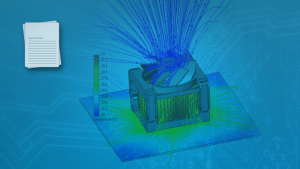White Paper: As designs get smaller, power densities at all packaging levels increase dramatically. Removing heat is critical to the operation and long-term reliability of electronics, and  component temperatures within specification are the universal criteria used to determine the acceptability of a design. Cooling solutions directly add weight, volume, and cost to the product, without delivering any functional benefit. What they provide is reliability. Without cooling, most electronic products would fail in a matter of minutes. Leakage current, and thus leakage power, goes up with smaller die-level feature sizes. Because leakage is temperature-dependent, thermal design is more important. How should engineers who develop products with complex and/or high-power electronics ensure the thermal performance of their products while meeting other design criteria?
component temperatures within specification are the universal criteria used to determine the acceptability of a design. Cooling solutions directly add weight, volume, and cost to the product, without delivering any functional benefit. What they provide is reliability. Without cooling, most electronic products would fail in a matter of minutes. Leakage current, and thus leakage power, goes up with smaller die-level feature sizes. Because leakage is temperature-dependent, thermal design is more important. How should engineers who develop products with complex and/or high-power electronics ensure the thermal performance of their products while meeting other design criteria?
To answer this question, this paper will take a look at ten things you should know about thermal design of electronic products.


